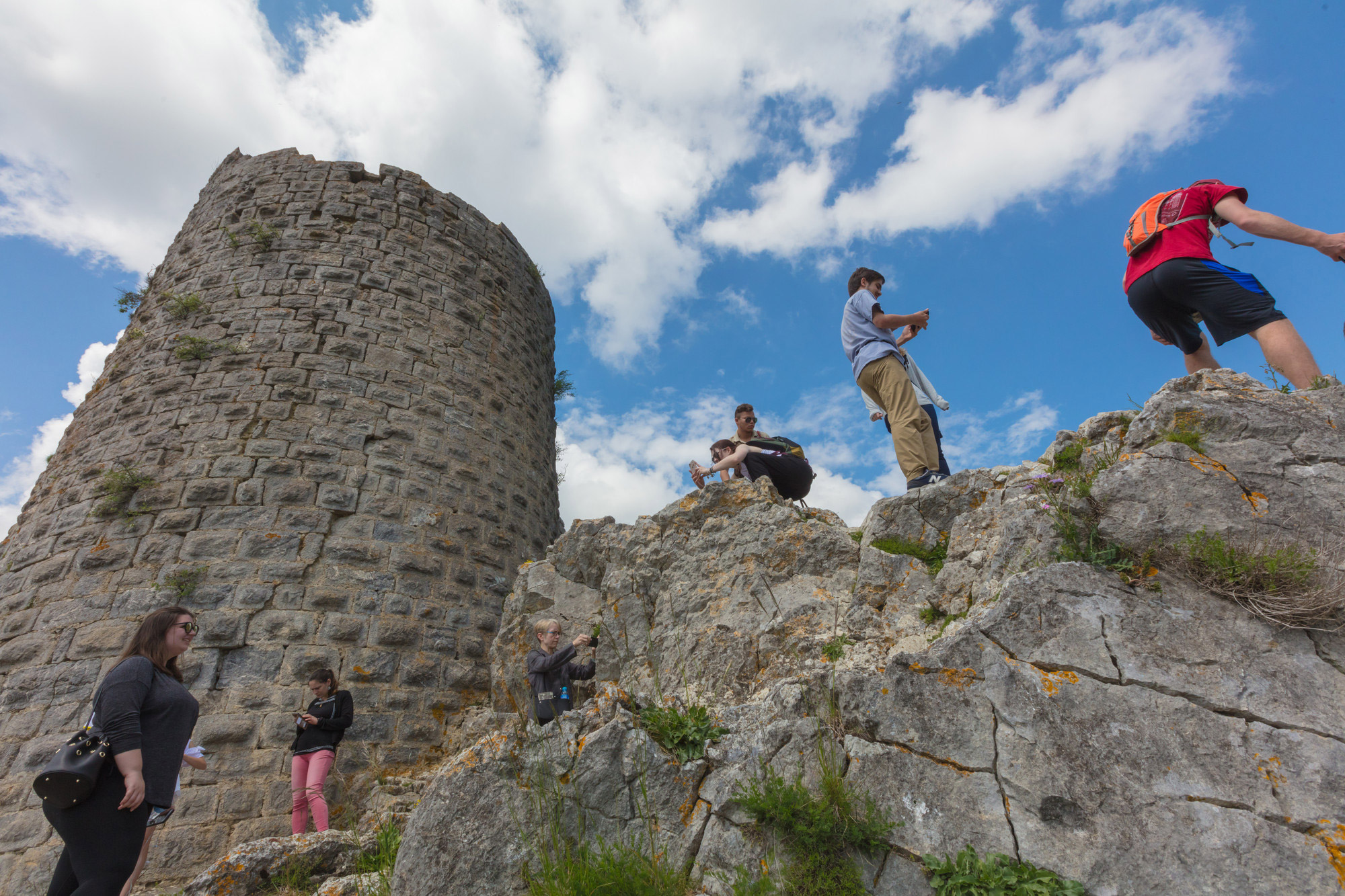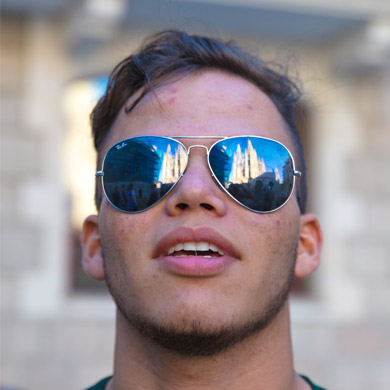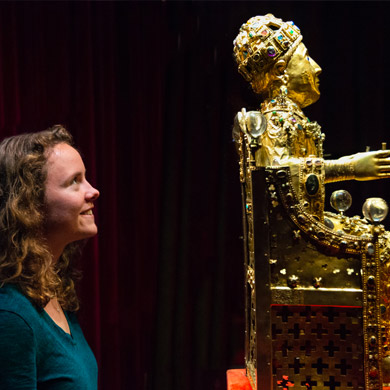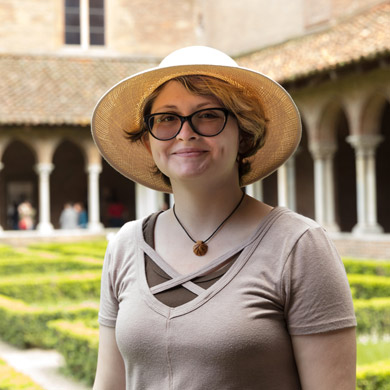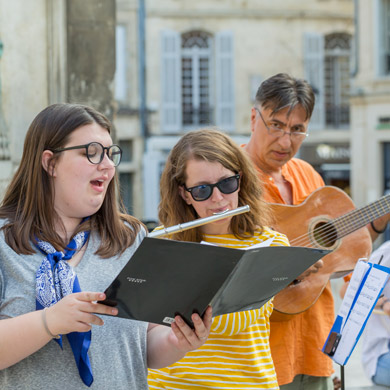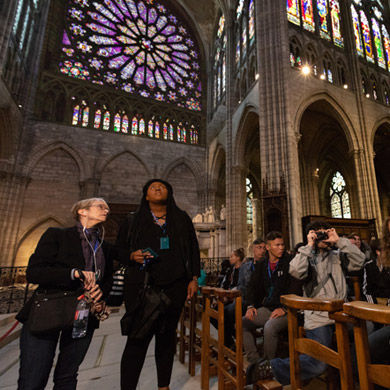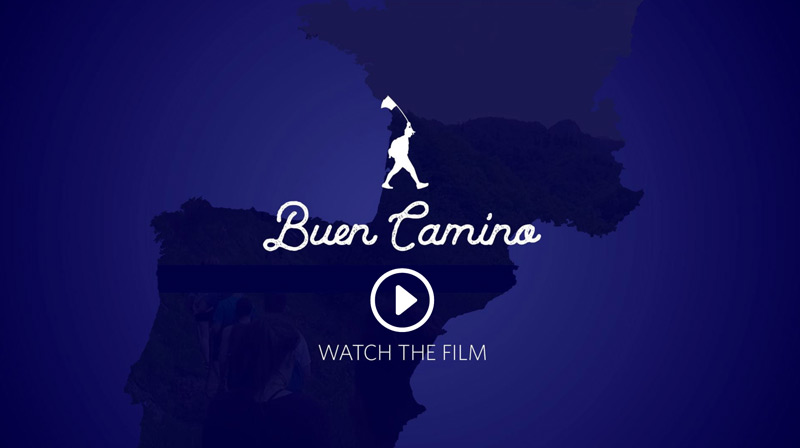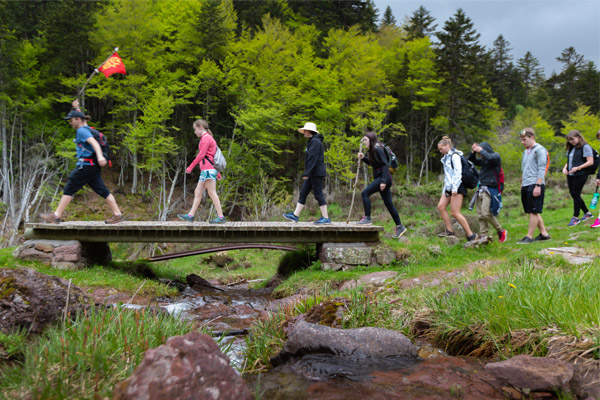
The path over the Pyrenees is lined with wild garlic, the air pungent with the smell. The trail winds upward through a rich forest of fir and birch, over muddy banks and swift-flowing streams. Feet stamp out a steady rhythm as students chat about subjects ranging from Star Wars to the reintroduction of Slovenian black bears to this region of France.
After a few kilometers of gentle climbing, we stop before the ruined 12th century foundation of an ancient “hospital,” a place of rest and recovery for medieval pilgrims. To the west, we notice the weather turning: the snow-capped mountains, glowing with a matte brilliance just minutes before, are enshrouded by gray, misty clouds. A few moments later thunder rumbles in the distance. The temperature drops and the day grows dark; soon, the rain begins. Before we know it we’re soaked, hiking through now-swampy grasslands and slipping over streams already swollen with late snowmelt. Despite the circumstances, the students are all in high spirits, laughing and grinning through sheets of rain. Curtis Worley channels the Count of Toulouse, ostensible heretic, waving the flag of the Languedoc region of France and leading the charge through the trees. Dani Carson and Jack Williams break into a run as the final climb over the pass comes into view.
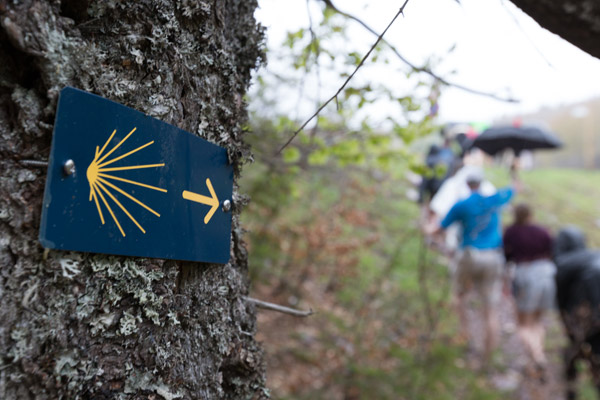
This is the Camino de Santiago. Not the spiritual hotspots or religious reliquaries that pepper the trail, but the physical, experiential filament that connects them all: the 18-inch-wide strip of earth that for centuries has guided both religious and secular pilgrims through France to Spain, each step carrying them that much closer to Santiago de Compostela, the city of Saint James.
